Introduction
The social media usage in recent years has been increasing dramatically due to the growing number of social networking sites, instant messaging services, online forums and mobile smartphones (Lai & To, 2015). And nowadays, social networks are one of the important components of marketing strategies and campaigns of companies aimed at attracting customers (Nadaraja & Yazdanifard, 2013). But without a correct social media strategy and social media plan, there is no chance to successfully run the companies (Saravanakumar & SuganthaLakshmi, 2012).
The company’s existence in social media networks helps build close relationships with customers in various industries around the world (Sashi, 2012), and event management industry is not an exception. The event management industry continues to prosper offering attendees more and more event choices from which they can choose (Global Meetings and Events Forecast, 2019). Due to the industry’s rapid growth, it is having difficulty attracting more attendees to events; therefore, developing a reliable and effective system for assessing the factors considered by the participants of the event is in the interest of contribution to the event marketing practice (Yoo & Chon, 2008). Competition between venues and events underlines the need for a better understanding of the attendee’s behaviour and their decision-making process (PCMA Survey, 2003, as cited in Severt, Wang, Chen & Breiter, 1987).
Which factors influence attendees when deciding to attend an event? What are the main reasons for attending the event? What social media channels attendees use and which sort of content is the most attractive? As well as other important questions that are related to the habits of using social networks and that must be answered for the successful event planning and communication.
The goal of this research is to explore and understand if there are differences between German and Portuguese attendees’ motives for the decision to participate in a conference, their social media usage and preferences and whether it is worth to adjust social media marketing plan for each of these 2 different markets.
This paper is divided into four main sections. The research starts with the literature review and an overview of the main definitions regarding social media and the conference industry. Secondly, we describe and justify the methodology used in this research. Then we introduce the empirical research results and discussion of the research main findings. The paper ends with the limitations of the study and suggestions for further research.
Literature Review
Social Media
The 21st century is experiencing a social media revolution that has already led to enormous changes in how consumers receive and use marketing communications (Williams, Crittenden, Keo & McCarty, 2012). On average, people spend a quarter of their free time on the Internet (Meesad, Sodsee & Unger 2017). But even though social media networks have become one of the main parts of our everyday life, the companies are still struggling to understand the customers in their social media and why and how they use them (Whiting & Williams, 2013). For consumers, digital media are now not only a resource for researching the products and services they want to purchase, but also for engaging with the companies and other consumers (Garretson, 2008). Therefore, social media should be one of the components of the company’s marketing strategies (Nadaraja & Yazdanifard, 2013). And the companies that really understand the online behaviour of their customers have an advantage to engage with them (Woodcock, Green & Starkey, 2011). But before implementing a social media marketing plan, it is essential to clearly define goals and target audience (Preston, 2012). Moreover, McCann and Barlow (2015) emphasized that a company should have a clear strategy and understanding of how and what it will be used for. According to Castronovo and Huang (2012), by formulating a social media strategy, a variety of social media tools can be used based on the goals of the strategy and the trends in social media usage among the target market. Defining the right strategy as well as conducting research on the target audience for this strategy are the main components of effective social media development for companies (McCann & Barlow, 2015).
Nowadays, the Internet is considered as the most cost-effective and more efficient way to engage with people (Castronovo & Huang, 2012). Social media facilitate the interaction between buyers and sellers and give the opportunity to better understand customers (Sashi, 2012). Social media marketing can be used to achieve various goals, including increasing traffic, increasing search engine rankings, or increasing sales of a product or service (Weinberg, 2009). The increase of market share and brand awareness could also be achieved by creating an appropriate social media strategy, which would be less costly than using traditional marketing tools (Rafiee & Sarabdeen, 2013). Even companies with a limited budget can run successful social media marketing campaigns with little or no cash investment (Nadaraja & Yazdanifard, 2013). Moreover, social media platforms give comprehensive opportunities to customize user engagement (Hanna, Rohm & Crittenden, 2011). And Farook and Abeysekara (2016) also emphasized that one advantage of social media is their positive effect on customer online engagement.
Conference customer engagement.
In recent years with the evolution of the Internet and various social media channels, the concept of customer engagement has increased its importance. Patterson, Yu and De Ruyter (2006) define customer engagement as the level of different forms of “presence” of the customers, such as physical, emotional or cognitive in their relationship with the organization. Farook and Abeysekara (2016) examined that the content of social media posts plays an important role in customer online engagement and noted that the higher the impact of social media marketing, the higher the customer engagement. According to Kilgour, Sasser and Larke (2015), in order to increase the social media engagement, it is important to understand the various user groups and their interaction on social media channels.
People attend conferences for various reasons and their decision depends on their priorities, interests, and tastes, and marketers’ approach should reflect their preferences in building a marketing plan (Preston, 2012). However, Preston also emphasized that different approaches should be used aimed at separate market segments that is why it is important to research and analyse the target market of potential customers.
In order to improve a strategic marketing campaign, it is important to understand people’s motivation and their decision-making process for attending various events (Gitelson & Kerstetter, 2000). Potential attendees have different requirements and motivational factors and participate in the conferences for various reasons (Hoyle, 2002).
Multiple motivations are usually the norm for the decision to travel and attend conferences. Rittichainuwat, Beck & Lalopa (2001), divided the conference motivations into 2 groups: the push factors related to human needs which motivate to travel and attend conferences, and the pull factors which are more related with the conference attractiveness and technical features. They also consider facilitators and inhibitors factors. The facilitators “refer to factors that encourage travel, such as availability of time, money, and good health”, and inhibitors “which are exemplified by the lack of money, time, and good health, discourage conference participation.” (Rittichainuwat, Beck & Lalopa 2001, p.47). According to the authors, the top five major conference motivations were “Education”, “Networking” “Interesting conference programs”, “Career enhancement” and “Traveling to desirable place”. The top three major conference inhibitors were money, time, and distance. And the top four major conference facilitators were “Covered travel expense from my employer, school”, “Affordable conference costs”, “Affordable transportation costs”, and “Time availability”.
Getz (2007) classifies the motivators in 2 large groups: the first one is the ‘intrinsic motivators’, which are related with escapism that connects the event with a desired leisure pursuit. This escapism “leads people to events for the generic benefits of entertainment and diversion, socializing, learning and doing something new” (p.416). The second group named as “the pull or seeking factors” is related “to those with special interests who want a specific set of benefits offered by the event” (Getz, 2007, p.416), and the professionals who have to attend certain conferences because of their content or unique networking possibilities are mostly included here.
Oppermann and Chung (1997) were the first who developed a conceptual framework for decision-making of participation in conventions. This model represents how different variables influence the decision-making of potential attendees. Personal or business factors, association or conference factors, location factors, and intervening factors are the four main factors that influence an individual’s decision-making process when attending a conference. The figure below represents the conference participation decision-making process.
Personal or business factors. The first factor that any potential attendee takes into account when deciding whether to attend the conference or not is the conference accessibility that includes the conference cost, family concerns, health of attendees and time availability of participants. Moreover, one of the conference attendance motivators that are related to personal and business factors is the desire to learn something new to become a better specialist in the field and professional advancement.
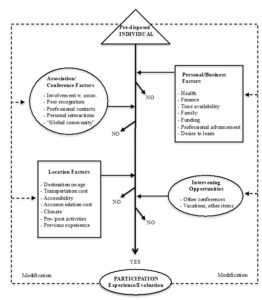
Figure 1: Conference Participation Decision-Making Process. Source: Oppermann & Chon (1997 p.186)
Association or conference factors. This factor is associated with the involvement of a person in the corresponding association: networking and job opportunities, personal interaction with like-minded people and making professional contact play a major part in deciding whether to attend the conference or not.
Location factors. Favourable conference locations nearby the airport or home are important factors considering whether to attend the conference or not. Moreover, the closest location will save time and money and decrease the expenditure cost of attendees. For some people, the climate of the country where the conference is held can also influence decision making to attend the conference.
Intervening factors. Oppermann & Chung (1997) emphasized that conferences should not only compete with each other for attendees but also compete against other related products or services. Other conferences, for example, are taking place in another more attractive location, at different times or with better speakers, and programs can be one of the intervening options for potential attendees. It may also refer to a different way of spending time rather than going to the conference. Such opportunities also include spending time with family, traveling, or simply staying at home and watching the conference online.
Research and Data Collection Method
When choosing the research methodology and the way the data are collected, the aim of the research has a high influence. The aim of this research is to better understand the motivation of product managers to attend conferences, and to collect information about social media usage and preferences of product managers to improve consumers’ engagement. Moreover, we wanted to understand whether there are different motivational factors of decision-making processes to attend the conference from people of different nationalities (namely Portugal and Germany) as well as their social media usage and preferences.
Considering the goal of the research we follow non-experimental quantitative research. Due to geographical limitations, the quantitative primary research in the form of online survey was chosen to collect the data. The non-probability sampling technique was used throughout the research using a convenience sampling design.
The survey was distributed, with the help of the marketing department of a company responsible for the organization of a big annual event for Product Managers in the Southern part of Europe. The survey, which was constructed in English and had identical questions for both German and Portuguese respondents, was placed on social media channels of Facebook, LinkedIn, Instagram and Twitter, sent in the company newsletters of the 6th and 14th of November 2019, and sent by email to the attendees of the conference organized in 2019 by the company that collaborated with the study.
In total, 135 people participated in the survey, however, after the preamble to survey for consent to participate in research and the question of where do respondents live, 26 respondents were eliminated because they didn’t meet the requirements for the survey. 109 respondents were selected for further analysis: 53 respondents from Germany and 56 respondents from Portugal.
Both German and Portuguese attendees’ online survey consists of 20 questions and was grouped in 4 categories: demographic characteristics, attitude toward the conference, motivational factors and social media usage and content preferences. This survey was designed to better understand the motivation of product managers to attend conferences and the factors that influence decision making to attend professional events.
Results
Decision making and attractiveness factors.
Attitude toward the conference. Two questions were asked in order to analyse the attitude of respondents toward the conferences in terms of how often they attend the conference per year and if there are any other resources besides going to the conference to develop themselves as product management professionals. Almost all the respondents (46 (87%) from Germany and 51 (91%) from Portugal) indicated that they read blogs, articles, books and other resources that are on topic. 36 (68%) respondents from Germany and 35 (63%) from Portugal mentioned that they attend the conferences. What concerns how many conferences do participants attend, on average, in a year, the majority of respondents 41 (77%) from Germany and 37 (66%) from Portugal attend conferences 1-2 times per year.
Motivational factors. A block of questions in this section was asked to find out what factors influence the respondent when deciding to attend the conference. Respondents were asked to evaluate factors in terms of importance from 1 – not important at all, to 5 – very important. From Figure 2 below it is clear that the most important factors for both German and Portuguese attendees are: prestigious speakers, ease of access and the price of the tickets. Travel expenditures are not too far behind. And the expectations related to a partnership with organizations that protect the environment and famous brand name of the company are the least important for attendees.
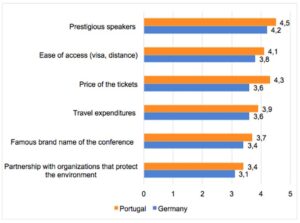
Figure 2: Bar graph. Average evaluation of respondents’ factors to attend the conference
When respondents were asked to evaluate their motivation to attend the conference using the level of measurement in the range from 1 to 5, from the not important at all to very important, the results showed that the most important motivational factors for attendees to get theoretical knowledge and to get inspired (Figure 3).
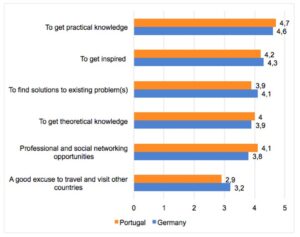
Figure 3: Bar graph. Average evaluation of respondents’ motivation to attend the conference.
Respondents were asked where would they first search for the conference if decided to attend the conference. 25 respondents (47%) from German and 32 (57%) from Portuguese attendees mentioned that google search in most cases is the most preferable way of search for the conference. In the second place, 30% of German attendees and 27% of Portuguese attendees prefer to search in social media.
The respondents were asked with whom they attend conferences. Results revealed that 32 respondents (60%) of German attendees prefer to attend the conference with their co-workers while only 18 attendees (32%) form Portugal mentioned that. Portuguese respondents are most likely to attend the conference alone and more than half of the respondents (59%) indicated that.
According to the survey, regardless of the country, the majority of respondents, 20 (38%) from Germany and 25 respondents (45%) from Portugal, pointed that the best alternative to the conference is YouTube videos with speakers’ talks. Live streaming of the conference goes after and accounts 26% of German answers and 32% of Portuguese.
Social media usage and content preferences. This part of the survey was moulded to collect information about the social media usage of respondents. Figure 4 below shows that the most popular social media platforms in terms of how often they are used are: LinkedIn, YouTube, Instagram and Facebook.
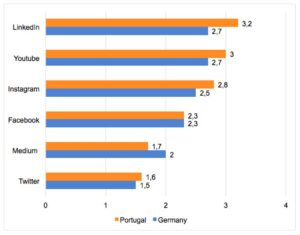
Figure 4. Bar graph. Average evaluation of respondents’ usage of different social media platforms.
From the question regarding which part of the day you are the most active on social media, the majority of respondents, 34 (64%) from Germany and 27 (48%) from Portugal, answered that they are most active in the evening. 13 (25%) of German and 8 (14%) of Portuguese are most active in the morning.
Respondents were asked to indicate their level of agreement with a statement with five-items focused on identifying what is their internal motivation for using social media (Figure 5). The most highly rated answers were “I use social media to connect and keep in touch with friends and family” and “I use social media to know the latest news”. Social media as a source of relaxation and entertainment are also not far behind. It is meaning that respondents fall under 3 categories of social media users: social interaction, information seeking, and entertainment.
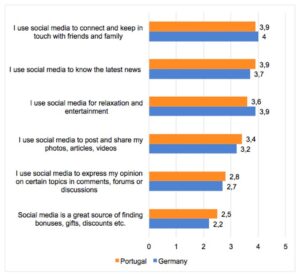
Figure 5: Bar graph. Average evaluation of respondents’ purpose of social media usage.
During the survey, respondents were asked what types of content do they prefer when learning about companies and their products or services. The figure below (Figure 6) shows that the most frequent answers were long articles, videos and social media posts. However, German respondents value social media posts more than the Portuguese, while they prefer to watch videos.
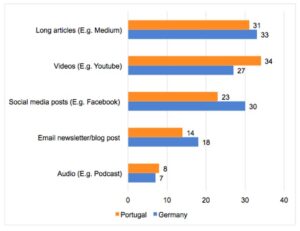
Figure 6: Bar graph. What types of content respondents prefer when learning about companies and their products or services?
While conducting the survey, participants were asked to evaluate how interesting is each of the following content for them in social media channels (Figure 7). The level of measurement in the range from 1 to 5 was used from strongly disagree to strongly agree. The information about speakers and their talks as well as educational materials about product management is the most interesting content for German and Portuguese respondents. Information about backstage and sales or discounts is not relevant for both respondents’ groups.
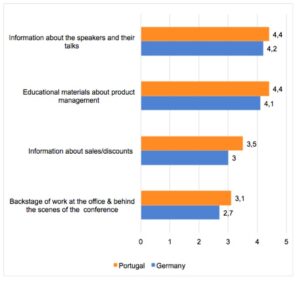
Figure 7: Bar graph. Average evaluation of respondent’s interest in the content of social networks.
Conclusions
While analysing the empirical research results, there were no significant differences identified between the markets. But it still is possible to identify small differences between the German and Portuguese Market. Firstly, German attendees commonly have 0-9 years of work experience, when Portuguese are more likely to attend conferences in the beginning of their career and has 0-3 years of work experience. Secondly, German attendees prefer to attend the conference with their co-workers while Portuguese are most likely to attend the conference alone. Moreover, long articles and social media posts are the most preferable type of content for the German market, while the Portuguese value more videos.
No other significant differences were identified between markets that assure that adapting social media marketing plan will not result in significant unsuspected issues in different markets. All the results will be used in the further development of managerial decisions of the company that collaborated with this study to improve its social media-marketing plan in Germany.
The study faces some limitations, such as time and geographic restrictions, as well as the fact that the survey was not conducted in the respondents’ native language. Due to the research limitations, the sample size was not big enough and can lead to biased interpretation of the results.
References
- Castronovo, C., & Huang, L. (2012). Social media in an alternative marketing communication model. Journal of marketing development and competitiveness, 6(1), 117-134.
- Farook, F. S., & Abeysekara, N. (2016). Influence of social media marketing on customer engagement. International Journal of Business Management Invention, 5(12), 115-125.
- Garretson, R. (2008). Future tense: The global CMO. Retrieved from http://graphics.eiu.com/upload/Google%20Text.pdf
- Getz, D. (2007). Event tourism: Definition, evolution, and research. Tourism Management 29, pp. 403-428
- Gitelson, R., & Kerstetter, D. (2000). A new perspective on the decision-making process of arts festival visitors. In Jago, L., Veal, A. J., Allen, J., & Harris, R. (Eds.), Events Beyond 2000: setting the agenda: proceedings of conference on event evaluation, research and education (pp. 179-185). Sydney, Australia: Australian Centre for Event Management.
- Global Meetings and Events Forecast. (2019). American Express Meetings & Events. Retrieved from https://3rxg9qea18zhtl6s2u8jammft-wpengine.netdna-ssl.com/wp-content/uploads/2018/11/2019-Global-Meetings-Forecast-Final-US121-1.pdf
- Hanna, R., Rohm, A., & Crittenden, V. L. (2011). We’re all connected: The power of the social media ecosystem. Business horizons, 54(3), 265-273. doi:10.1016/j.bushor.2011.01.007
- Hoyle, L. H. (2002). Event marketing: how to successfully promote events, festivals, conventions, and expositions. New York, US: J John Wiley & Sons, Inc.
- Kilgour, M., Sasser, S. L., & Larke, R. (2015). The social media transformation process: curating content into strategy. Corporate Communications: An International Journal, 20(3), 326-343. doi:10.1108/CCIJ-07-2014-0046
- Lai, L. S., & To, W. M. (2015). Content analysis of social media: A grounded theory approach. Journal of Electronic Commerce Research, 16(2), pp.138 – 152.
- McCann, M., & Barlow, A. (2015). Use and measurement of social media for SMEs. Journal of Small Business and Enterprise Development, 22(2), 273-287. doi: 10.1108/JSBED-08-2012-0096
- Nadaraja, R., & Yazdanifard, R. (2013). Social media marketing: advantages and disadvantages. Social Media Marketing, pp. 1-10.
- Oppermann, M. & Chon, K. S. (1997). Convention participation decision-making process. Annals of Tourism Research, 24(1), 178-191. doi:10.1016/S0160-7383(96)00049-7
- Patterson, P., Yu, T., & De Ruyter, K. (2006). Understanding customer engagement in services. In Y. Ali and M. van Dessel (Eds.), Advancing theory, maintaining relevance: Proceedings of ANZMAC 2006 conference (pp. 4-6). Brisbane, Australia: ANZMAC.
- (2003). Professional Convention Management Association Annual Survey. Retrieved from https://www.pcma.org/resources/
- Preston, C. (2012). Event marketing: how to successfully promote events, festivals, conventions, and expositions (). Hoboken, NJ: John Wiley & Sons.
- Rafiee, V. B., & Sarabdeen, J. (2013). Social media marketing: the unavoidable marketing management tool. 21st International Business, Information Management Association. Conference (IBIMA) (pp.933–942). Dubai: University of Wollongong in Dubai.
- Rittichainuwat, B., Beck, J., Lalopa, J. (2001). Understanding Motivations, Inhibitors, and Facilitators of Association Members in Attending International Conferences. Journal of Convention & Exhibition Management, Vol. 3(3), pp.45-62.
- Saravanakumar, M., & SuganthaLakshmi, T. (2012). Social media marketing. Life Science Journal, 9(4), 4444-4451. doi:10.7537/marslsj090412.670
- Sashi, C. M. (2012). Customer engagement, buyer-seller relationships, and social media. Management decision, 50(2), 253-272. doi: 10.1108/00251741211203551
- Severt, D., Wang, Y., Chen, P. J., & Breiter, D. (2007). Examining the motivation, perceived performance, and behavioral intentions of convention attendees: Evidence from a regional conference. Tourism Management, 28(2), 399-408. doi:doi.org/10.1016/j.tourman.2006.04.003
- Weinberg, T. (2009). The New Community Rules: Marketing on the Social Web. Sebastopol, CA: O’Reilly Media.
- Whiting, A., & Williams, D. (2013). Why people use social media: a uses and gratifications approach. Qualitative Market Research: An International Journal, 16(4), 362-369. doi:10.1108/QMR-06-2013-0041
- Williams, D. L., Crittenden, V. L., Keo, T., & McCarty, P. (2012). The use of social media: an exploratory study of usage among digital natives. Journal of Public Affairs, 12(2), 127-136. doi:10.1002/pa.1414
- Woodcock, N., Green, A., & Starkey, M. (2011). Social CRM as a business strategy. Journal of Database Marketing & Customer Strategy Management, 18(1), 50-64. doi:10.1057/dbm.2011.7
- Yoo, J. J. E., & Chon, K. (2008). Factors affecting convention participation decision-making: Developing a measurement scale. Journal of Travel Research, 47(1), 113-122. doi:10.1177/0047287507312421









